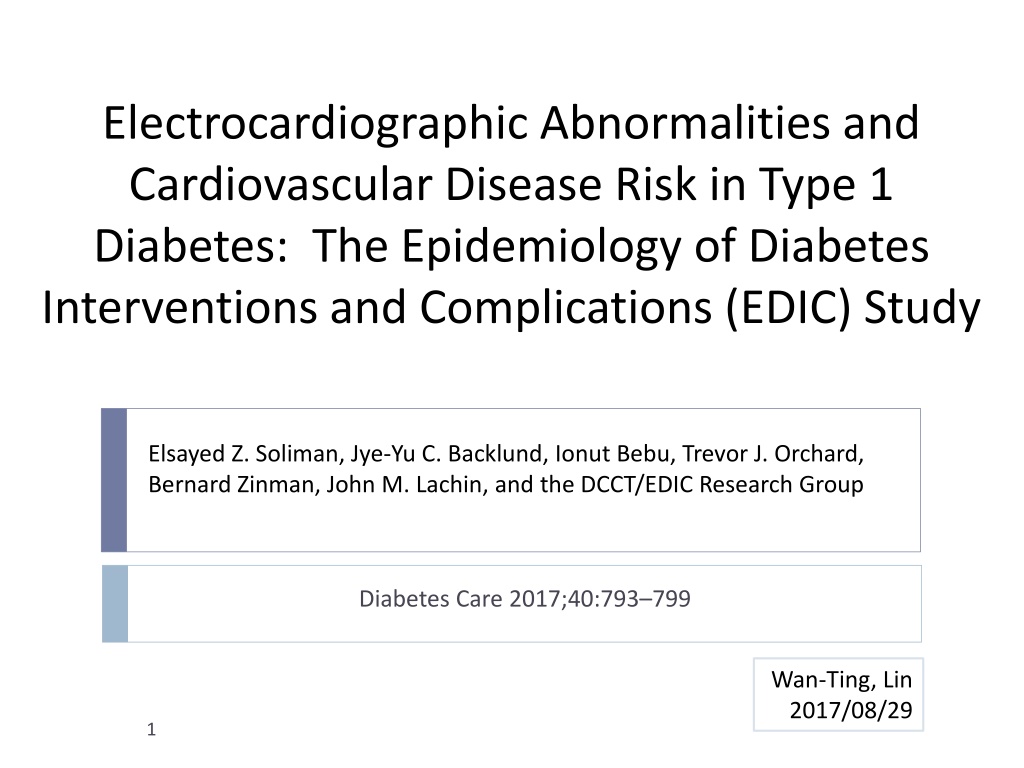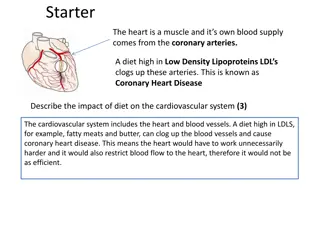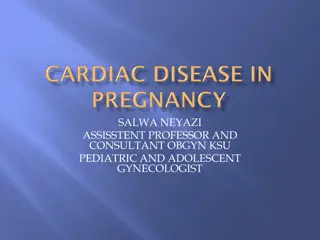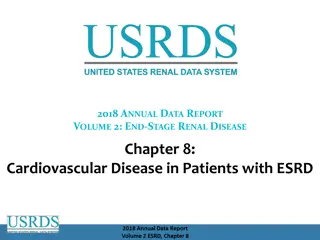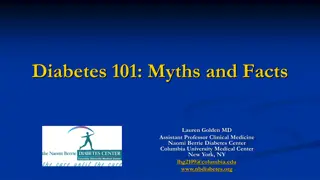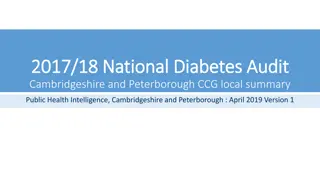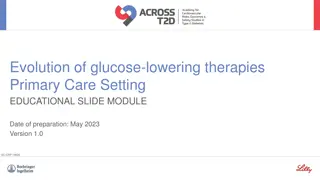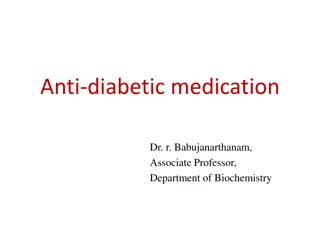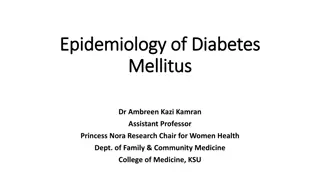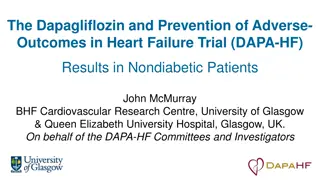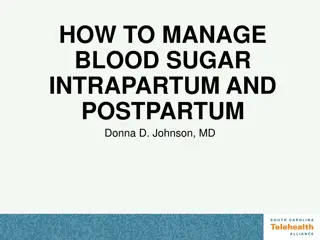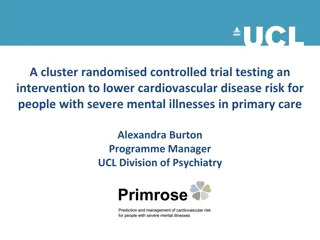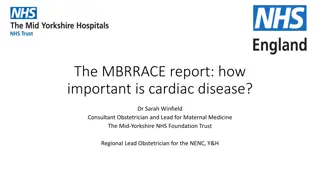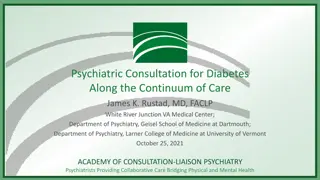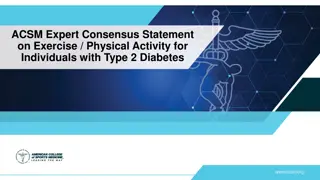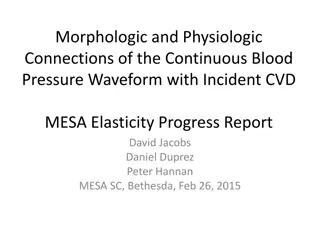Electrocardiographic Abnormalities and Cardiovascular Disease Risk in Type 1 Diabetes
This study examines the association between ECG abnormalities and incident CVD events in patients with type 1 diabetes, focusing on the prognostic significance in a population where CVD develops earlier. Major and minor ECG abnormalities were classified, with cardiovascular events such as myocardial infarction, stroke, angina, and heart failure being monitored. Covariates like age, sex, smoking, and medications were considered in the analysis.
Download Presentation

Please find below an Image/Link to download the presentation.
The content on the website is provided AS IS for your information and personal use only. It may not be sold, licensed, or shared on other websites without obtaining consent from the author. Download presentation by click this link. If you encounter any issues during the download, it is possible that the publisher has removed the file from their server.
E N D
Presentation Transcript
Electrocardiographic Abnormalities and Cardiovascular Disease Risk in Type 1 Diabetes: The Epidemiology of Diabetes Interventions and Complications (EDIC) Study Elsayed Z. Soliman, Jye-Yu C. Backlund, Ionut Bebu, Trevor J. Orchard, Bernard Zinman, John M. Lachin, and the DCCT/EDIC Research Group Diabetes Care 2017;40:793 799 Wan-Ting, Lin 2017/08/29 1
Introduction Prior reports have shown that the presence of these ECG abnormalities in populations without diabetes is associated with an increased risk of CVD events and all-cause mortality. Similarly, in a small study with a relatively short follow-up, the presence of ECG markers of myocardial ischemia in patients with type 1 diabetes was predictive of future coronary heart disease. However, no comprehensive reports have described the prognostic significance of ECG abnormalities in patients with type 1 diabetes, in whom CVD develops at least a decade sooner compared with the general population. 2
Aim The purpose of this study was to examine the association between the presence of ECG abnormalities and incident CVD events in patients with type 1 diabetes enrolled in the EDIC Study, providing observational follow-up of the DCCT cohort. 3
the Diabetes Control and Complications Trial (DCCT) During 1983 1989 enrolled 1,441 individuals aged 13 39 years old Started in 1994 4
ECG ECG abnormalities were classified as major and minor abnormalities using the standards of the Minnesota Code (MC) for ECG classification. Major ECG abnormalities Minor ECG abnormalities 5
Cardiovascular Event All events were adjudicated by a mortality and morbidity review committee whose members were blinded to the DCCT treatment group and level of glycemia. These events included the first occurrence of either a nonfatal myocardial infarction including Silent myocardial infarction, stroke, confirmed angina, coronary artery revascularization, and congestive heart failure or death from any CVD 6
Covariates Demographic variables (age and sex), smoking, use of lipid- lowering medications, and use of blood pressure-lowering medications were self-reported. Fasting lipid profile and albumin excretion were assessed biennially, in alternate years, whereas HbA1c, BMI, and blood pressure were measured annually. as time-dependent covariates The updated mean values were computed using weights proportional to the time interval between values because of the different visit schedules during DCCT and EDIC. 7
Statistical analysis Clinical characteristics Wilcoxon rank sum test Chi-square test The association between ECG abnormalities and CVD abnormalities Cox proportional hazard models time-varying per number of visits (years) 8
Statistical analysis Hazard ratio were calculated in minimally adjusted model (model 1) included age and sex at baseline (EDIC year 1) fully adjusted model (model 2) included DCCT cohort and the most significant time-varying traditional CVD risk factors Participants were censored at the time of an event, death, or 31 December 2013 (the end of follow-up), whichever occurred first. 9
Limitations The majority of EDIC participants are Caucasian, which may limit the generalizability of our results to other races/ ethnicities. We used global classification of ECG abnormalities (major, minor) rather than individual ECG abnormalities. Arguably, different individual ECG abnormalities might have different associations with CVD. For example, HbA1c is monitored much more frequently in contemporary practice than before. If we had used time-fixed covariates, this could have raised concerns about the conclusions of our study. use time-dependent covariates 14
Strengths The first comprehensive report of the prognostic significance of ECG abnormalities in type 1 diabetes. The uniform collection of data, including centrally read ECG data, and the long-term follow-up of a cohort of patients with type 1 diabetes with extensive phenotyping are just a few of the many strengths of the EDIC study. 15
Conclusion In conclusion, the presence of major ECG abnormalities during the course of type 1 diabetes is associated with an increased risk of CVD events. Identifying risk markers/predictors such as ECG abnormalities in type 1 diabetes could help guide future efforts toward the development of risk stratification tools to identify those who may benefit from closer follow-up and earlier, more aggressive risk factor management. 16
